Your washing machine vibrates or makes noise, what can you do about it?
Solve washing machine noise
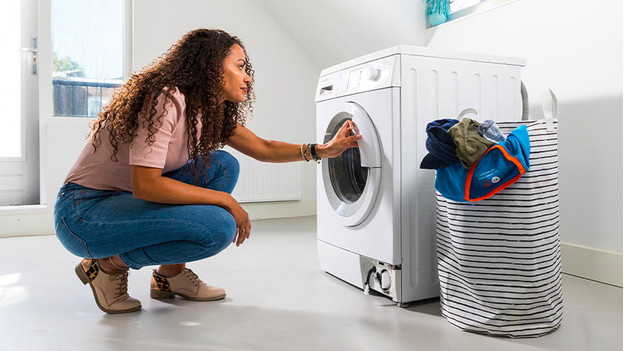
When your washing machine produces a lot of noise, you'll first have to listen to the type of noise. We distinguish the following types of noise:
- Tip 1. Wiggling noise: level your washing machine
- Tip 2. Vibrating noise: redistribute your laundry
- Tip 3. Screeching noise: check the bearings
- Tip 4. Pounding noise: check the shock absorbers
- Tip 5. Ticking noise at the bottom: clean the filter
- Tip 6. Ticking noise in the water pipe: insert a water hammer arrestor
- Tip 7. Noise with a Samsung washing machine: calibrate the machine
- Tip 8. Washing machine broken? Have it repaired by Coolblue
Tip 1. Wiggling noise: level your washing machine
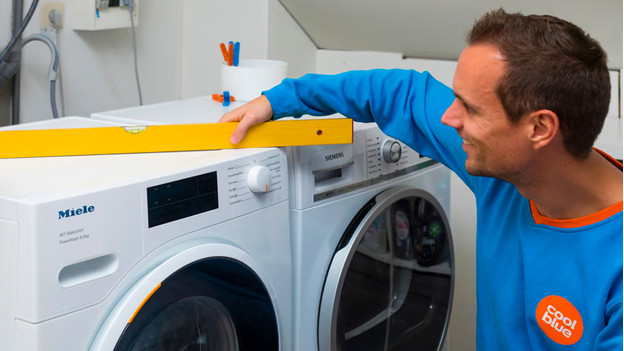
If your washing machine wiggles, you should make sure it's level. Place a spirit level on top of the washing machine and check whether the bubble is located between the 2 stripes. Adjust the leveling feet under the washing machine until the bubble is in the center. Tighten the nuts firmly. Because the machine spins, the nuts loosen over time. That's why you should level the washing machine regularly. Take the surface your washing machine is on into account as well. Read which floor is the most suitable here.
Tip 2. Vibrating noise: redistribute your laundry

A washing machine that vibrates, usually has a drum that's too full. When you wash your bedding and towels at the same time, for example. The heavy, wet laundry causes the washing machine to produce more noise. Sometimes, your bedding is on one side. The washing machine will be unbalanced as a result. Take some laundry out of the drum and redistribute the other laundry. Then, restart the cycle. It should make less noise now. Make sure to check whether a lower or higher speed helps reduce the noise as well.
Tip 3. Screeching noise: check the bearings

Does your washing machine make a lot of noise during spinning and would you describe the noise as howling or screeching? It's possible that the bearings are worn out. You can test this by manually rotating the empty drum. Does it feel smooth? The bearings are fine. If it feels heavy or wobbly, we recommend you replace the bearings. If it's within the warranty period, you can contact the manufacturer to replace the bearings. Outside of the warranty period, you contact a repair service.
Tip 4. Pounding noise: check the shock absorbers and transit bolts
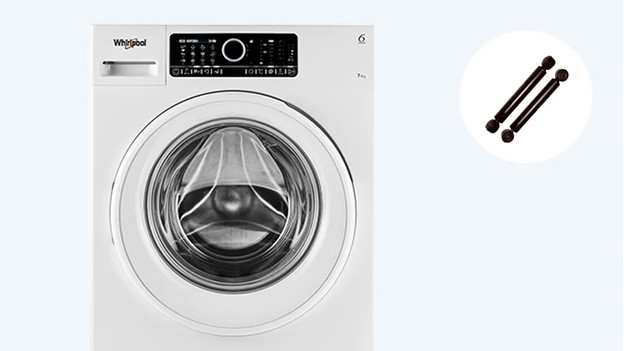
First, check if the transit bolts have been removed. You'll find them on the back. Unscrew the bolts with a wrench and remove them. If you hear a pounding noise during the spin cycle, check the shock absorbers on the bottom as well. These loosen over time, which causes the drum to shake in all directions. Make sure to replace the shock absorbers or springs in time. If your washing machine is still covered by the warranty, contact the vendor or the manufacturer. If you don't have a warranty anymore, contact our repair service.
Tip 5. Ticking noise at the bottom: clean the filter
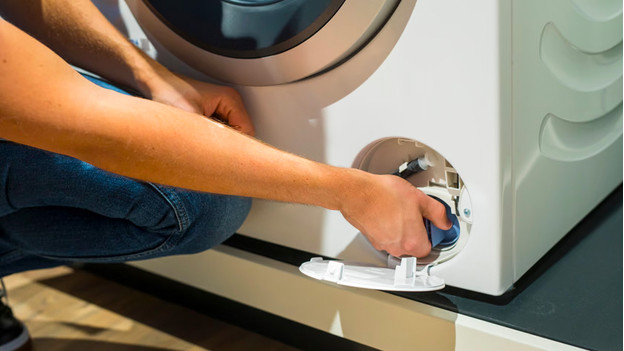
Do you hear a ticking noise during a wash cycle? During wash cycles, all kinds of small objects from the filter end up in the drum. Buttons, hairpins, or other small items left in pockets, for example. That's why you have to clean the filter of your washing machine every few months. Is the filter empty, but do you still hear a ticking noise? Sometimes, the zipper of a vest or a button of your favorite jeans hits the door during a cycle.
Tip 6. Ticking noise in the water pipe: insert a water hammer arrestor
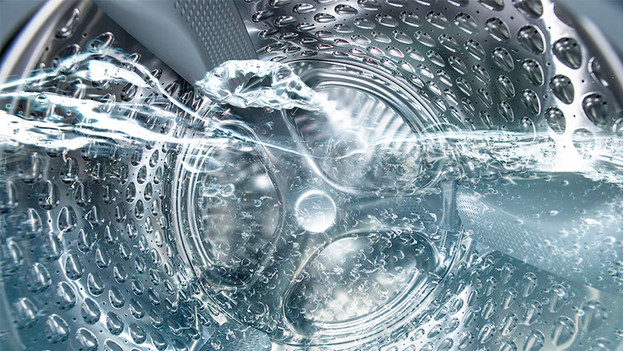
If you hear noise coming from the water pipe, we call this water hammer. It means that there's too much air inside. You can recognize this by a ticking, pounding, or vibrating noise coming from the pipe. Buy a water hammer arrestor to absorb the difference in pressure. First, close the main water supply. Then, close and open the water supply of the washing machine. Insert the water hammer arrestor between the water supply and washing machine with a T-piece. Seal the T-piece with sealing tape. Can't make it work yourself? Call a plumber.
Tip 7. Samsung washing machine produces noise: calibrate

If you have a Samsung washing machine, you have to calibrate it. Before you do this, adjust the 4 legs until the washing machine is level. Then, tighten every nut firmly with a wrench to prevent the washing machine from wiggling and making noise. The spin cycle causes the nuts to loosen over time, so you have to repeat these steps regularly. After that, you can calibrate the Samsung washing machine. This takes about 3 minutes, and you can do it via the display. Read how to do this here.
Tip 8. Make an appointment with CoolblueRepairs
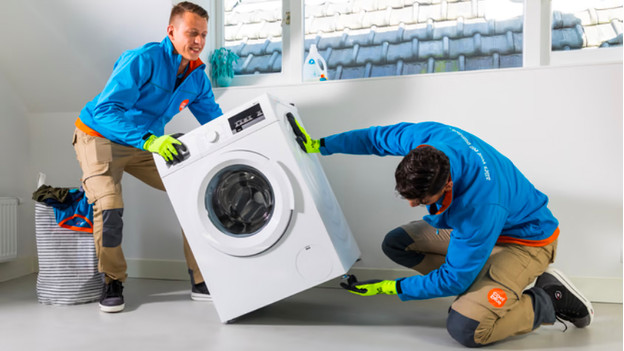
Your washing machine may be broken and producing noise. You can make an appointment with a technician via our CoolblueRepairs service. Fill out a form on our repairs page or call 010 742 13 91 to do that. Our technicians will visit you the following working day. You pay a fixed amount for the diagnosis and repair, including VAT and call-out costs. Click here for more information and to make an appointment via the online registration form.
You want a more silent washing machine
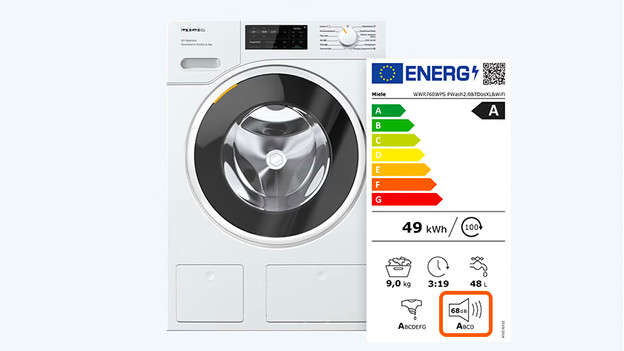
Does your washing machine still produce a lot of noise? And don't you want to spend money to replace the worn out parts of your old washing machine? Consider buying an extra silent washing machine. A washing machine that produces 70dB noise level or less is the most silent. Thanks to the low noise level, you can easily place it next to your living room or home office. You can even run a wash cycle when you're in a meeting at home.


